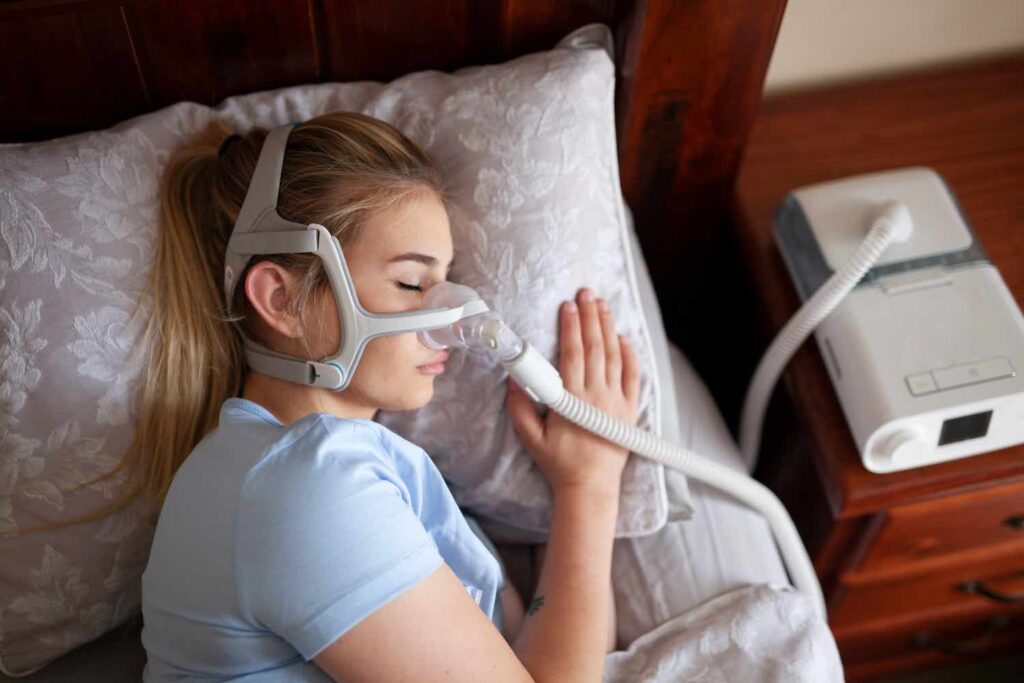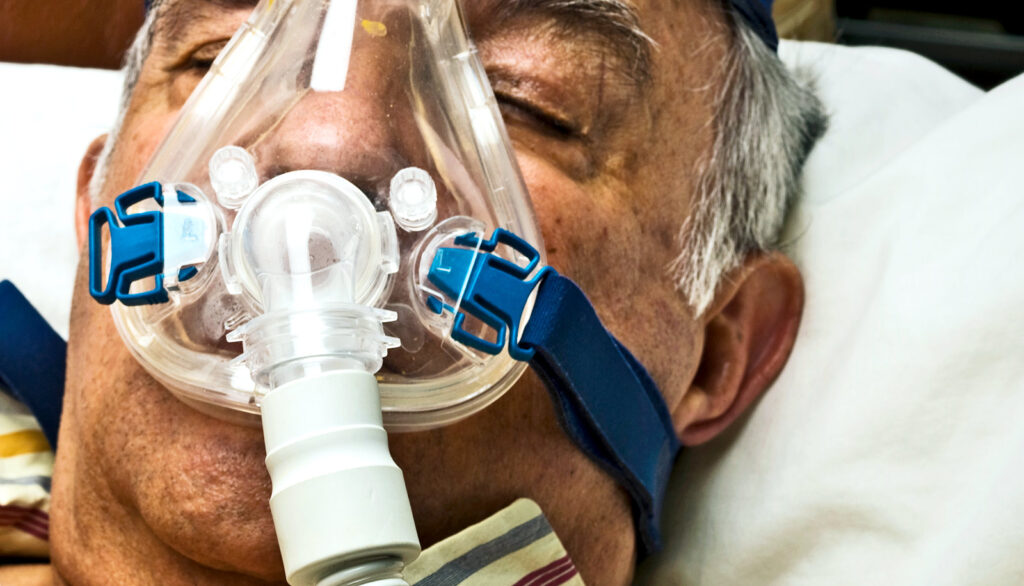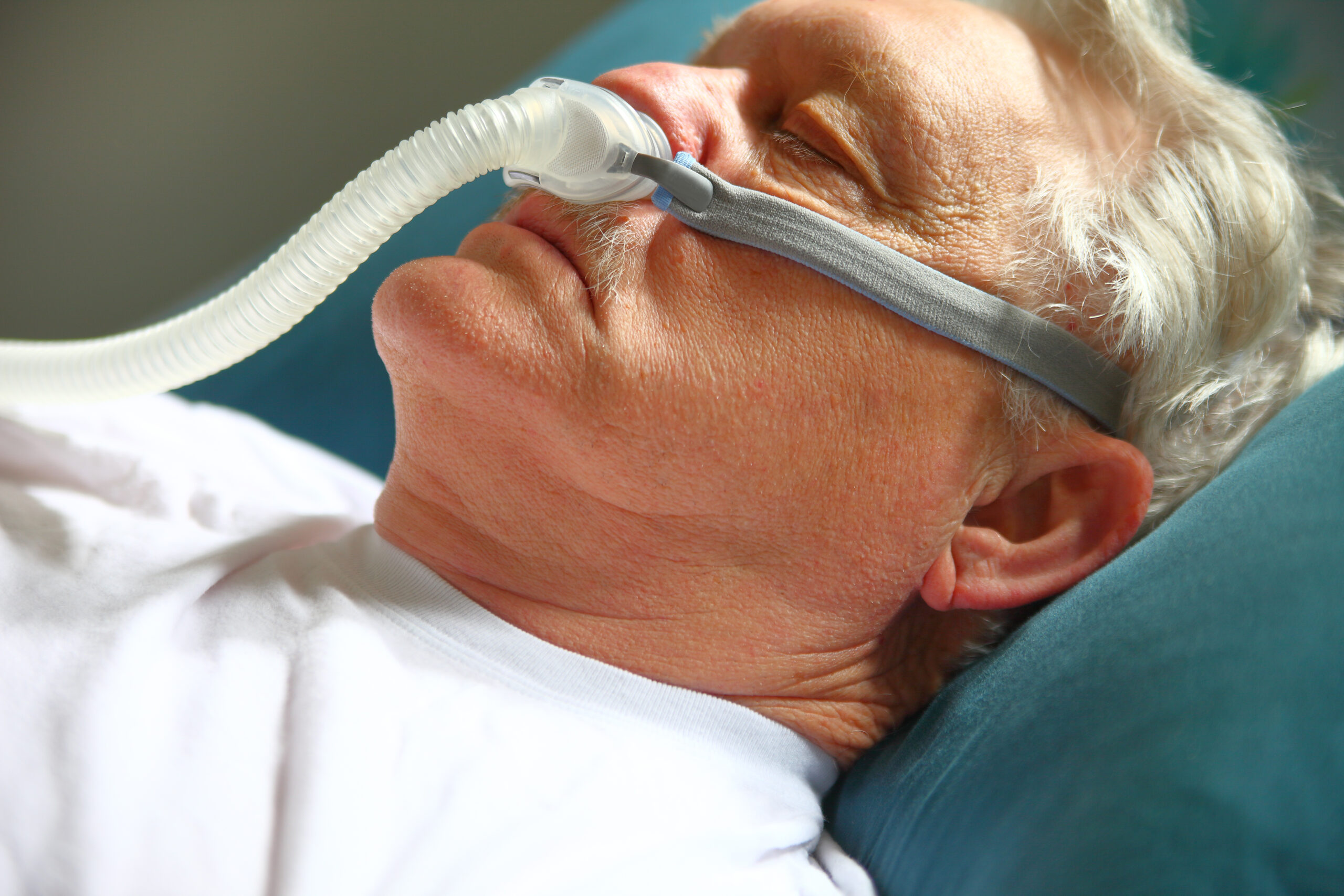Continuous positive airway pressure (CPAP) is a standard therapy for persons with obstructive sleep apnea. A hose, mask, or nosepiece are used with a CPAP machine, which is intended to provide consistent and stable air pressure while you sleep. Although getting used to sleeping with a CPAP might be difficult at first, there are ways to make it more pleasant.
A leaky mask, difficulty settling asleep, a stuffy nose, and a dry mouth are typical cpap mask issues. There are alternative possibilities if your current CPAP doesn’t work for you, which is excellent news. We’ll go through several techniques for using your CPAP to help you sleep better.
Sleeping with CPAP masks
- You become better with practice. It will grow simpler to fall asleep if you get used to wearing your CPAP masks. For an hour throughout the day or just before night, wear it. It will feel comfier the longer you wear it.
- Apply it each time you go to bed. Even though it hurts at first, using your CPAP masks every night is an excellent way to incorporate it into your routine. It will get more comfortable the more you sleep with it.
- Verify that your CPAP masks is customized for you. Discuss your sleeping habits with your doctor or the company that provides medical equipment to ensure that your mask is fitted appropriately. Do you use your mouth to breathe? Do you sleep on your side? They will be able to choose the mask that works best for you with the more details you provide.
- Every night, adjust your CPAP masks. Even if you had your mask fitted, you may still adjust it on your own to make it more comfortable. Make careful to adjust the machine while laying down and with the machine turned on. Lying down will guarantee that you have a proper fit since many masks slightly expand when the air is turned on to improve the seal.
- On your CPAP machine, use AutoRamp. One of the most used CPAP machine settings is this one. With the AutoRamp option, you may start at a very low air pressure while attempting to go asleep and gradually increase to full pressure after you’re sleeping. You can more quickly fall asleep thanks to this function.
- If you have a dry throat or nose, use a CPAP humidifier. Keeping your mouth and nose moist while receiving CPAP therapy is essential. Nowadays, CPAP devices have built-in humidifiers that let you choose the ideal humidity level to prevent your throat and mouth from becoming dry.
- Improve your way of living to promote rest. You may fall asleep faster by adjusting a few little aspects of your daily schedule. Avoid eating or drinking two hours before night, as well as avoiding coffee and other stimulants close to bedtime. You may also have easier time falling asleep if you exercise for at least 30 minutes every day or a few times each week.
- Make your bedroom comfortable. Your bedroom should be quiet, cool, and distraction-free. Use a fan to generate a pleasant sound and to cool off a heated or silent environment. Additionally, keep your bedroom tidy and devoid of clutter since messes might unintentionally make you anxious and keep you awake.
CPAP masks might take some time to get accustomed to. According to Cralle, “some individuals acclimatize to CPAP instantly, while others may take some time getting acclimated to CPAP.” Keep at it, however. It may take time for your therapy to be effective. You may collaborate with your physician and CPAP provider to address any issues.

You should be aware of the following if you use a CPAP mask.
Choose the proper CPAP masks.
There are many different sizes, forms, and designs of CPAP masks. Since everyone has a unique facial shape, what suits you could not suit someone else. Make sure it fits snugly, preventing any air leaks that could go into your eyes or prevent you from getting the best treatment possible.
A complete face mask that covers your mouth and nose is available on certain CPAP masks. For folks who breathe through their lips, they are an excellent option. Under the nose, nasal pillows lay at the beginning of your nostrils. Given that they don’t completely cover your eyes like a full face mask, that design may be suitable if you wear spectacles. Nasal masks are smaller and lighter than full-face models, and they cover the nose.
Choose from a variety of styles to determine which is most comfortable; a mask that fits correctly shouldn’t hurt. (Just because you fit into one mask at a given size doesn’t imply you’ll fit into another at the same size.)
Feel at ease using the equipment.
When you’re awake, put it on for brief periods of time when you’re reading or watching TV. Use it anytime you sleep, including during naps, after you’ve become used to wearing it. You’ll get more used to it the more you wear it.
The health advantages of the treatment are jeopardized by inconsistent usage of CPAP, according to Cralle. Additionally, according to Cralle, you might benefit from cushions designed especially for CPAP users. For side sleepers in particular, she notes, “they usually have a distinct form that can fit your CPAP mask and tubing.”

Avoid having a dry or stuffy nose.
Your nose or even your eyes might get dry from wearing a mask that leaks. (And a leaky mask prevents you from receiving the necessary amount of air pressure.) You may need to use a nasal saline spray before night or try one with a heated humidifier. Or maybe another design, like a nasal pillow, would be more appropriate for you. Simply avoid overusing nasal decongestants available over-the-counter, advises Dr. Appleton. That could cause dependency and worsen night-time nasal congestion. If this is a problem, talk to a medical expert.
You shouldn’t have a loud machine.
Nearly all modern models are quiet. Make sure the air filter is clear and clean if the device’s loudness disturbs you. According to Cralle, air filters should be replaced once a month or as directed by the manufacturer to keep your CPAP machine operating efficiently. The gadget may be examined by your doctor or provider to make sure it is performing at its best. Use earplugs or a white noise generator to block out the noise if it’s still an issue.
Do not suffer from dry mouth.
Some CPAP masks might make dry mouth worse if you sleep with your mouth open or breathe through your mouth at night. A chin strap might assist in keeping your lips shut and reducing air loss while using a nasal mask. Another option is to use a full-face mask that will cover your lips and nose. You may also use a humidifier attached to the air pressure device that is heated by CPAP. According to Dr. Appleton, several over-the-counter medications may also be beneficial for treating dry mouth.

